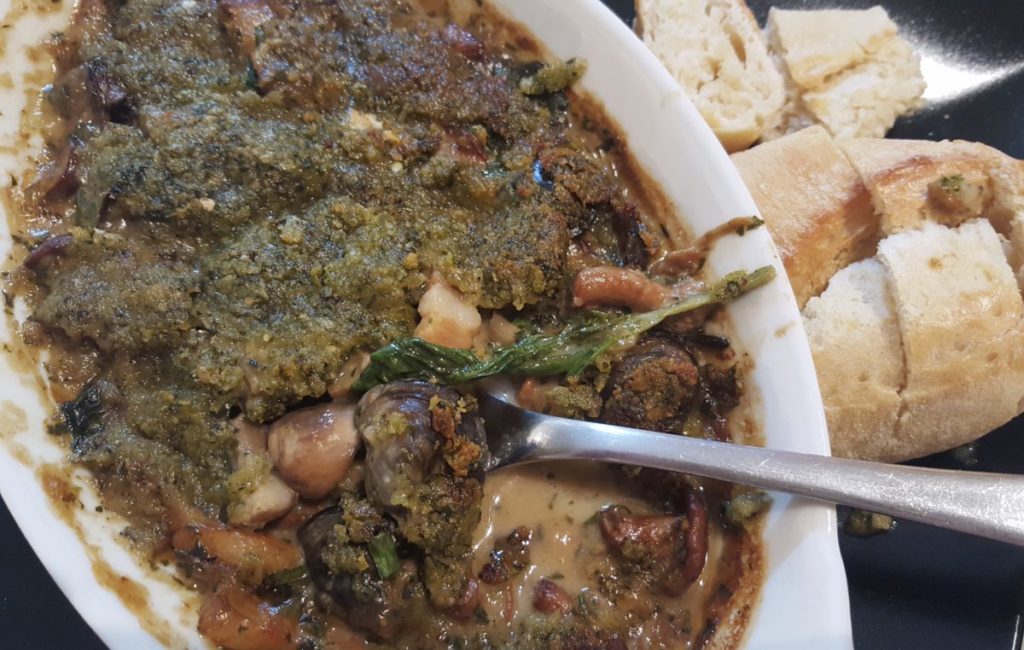I have no idea why escargots aka snails are not eaten more outside France. I guess people may be put off by the sheer idea of them. They are admittedly not the most aesthetically pleasing creatures and they are the bane of the life of many a garden enthusiast.
But they are delicious. And the snails on the plate are not the same slimy creatures fished from your garden. The right snail served in the right dish is glorious. The Nigerians have a traditional dish of giant snails with chillies and spices. Because the Nigerians, like the French, know that snails are not tough or rubbery, just like squid is not tough or rubbery, when cooked correctly.
Sadly most of us only know them in their shells drowning in a pool of garlic butter. In fact, the French call a butter flavoured with garlic and parsley “beurre escargot” because of the obvious association of such butter with the classic Escargots de Bourgogne.
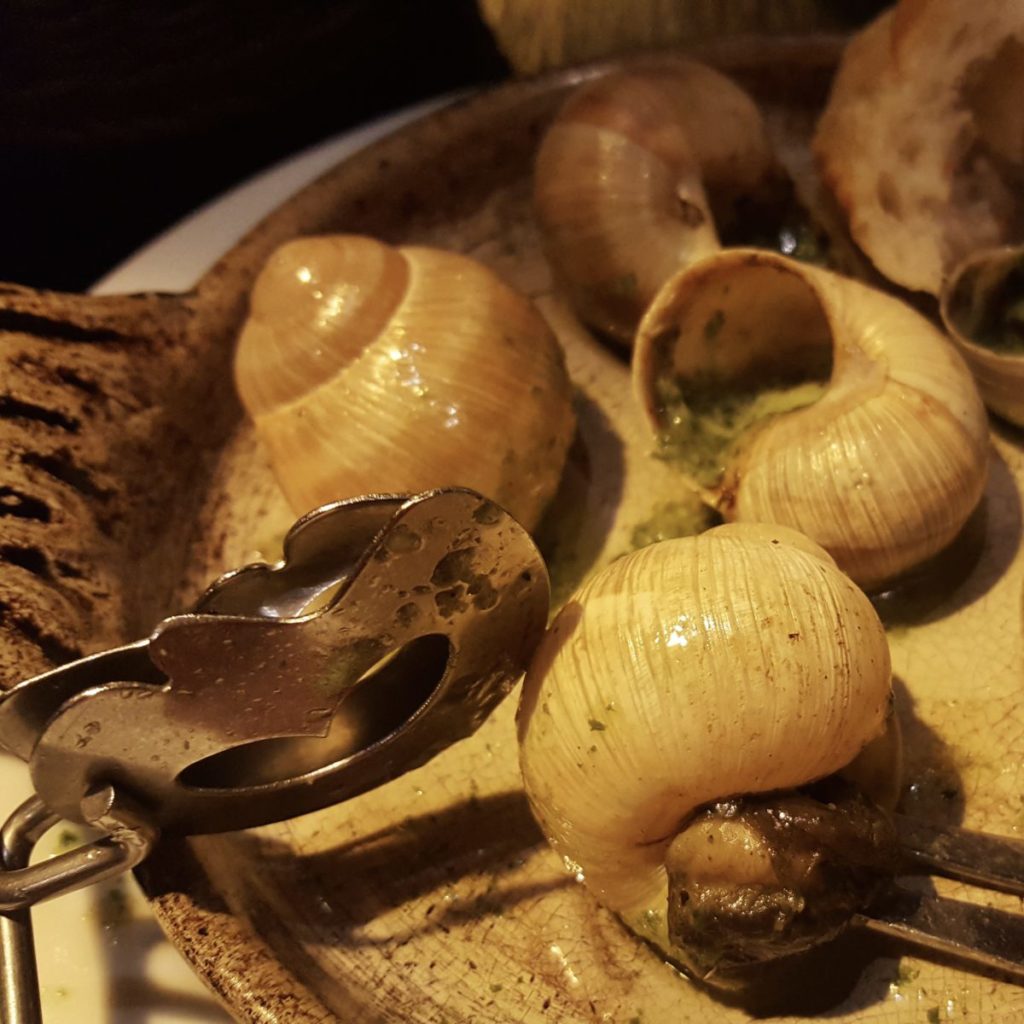
Many restaurants stuff empty shells with below average tinned or jarred snails and top them with so much below average garlic butter, the snails merely become a vehicle for the butter, rather than the other way round. The strong butter also masks their flavour, which is not necessarily a bad thing if the snails used are overcooked and not top quality.
Thankfully, there is also a strong tradition to serve escargots in a cocotte, a mini casserole or individual oven dish without their shells, Their earthiness pairs beautifully with smoky lardons, mushrooms (wild ones if in season), herbs like thyme and parsley, garlic (of course) and cream. They also work wonderfully well with tomatoes and red wine.
Snail cocottes can be served as they are, but they are often topped with puff pastry or scattered with a herby crumb. Topping or no topping, a good slice of crusty bread for dipping is never far away.
For this dish you need naked snails without their shells. You can buy those in jars or tins online or in specialist deli’s. I can also highly recommend Dorset Snails, a great online family business that supplies quality fresh snails to a number of top chefs. But they supply overnight to home cooks within the UK as well.
If you’re too squeamish to use snails, or can’t find them, you could make these cocottes with diced cooked chicken or pork.
THE RECIPE
Cocotte of Escargots, Bacon and Mushrooms (serves 3-4 GF LC RSF)
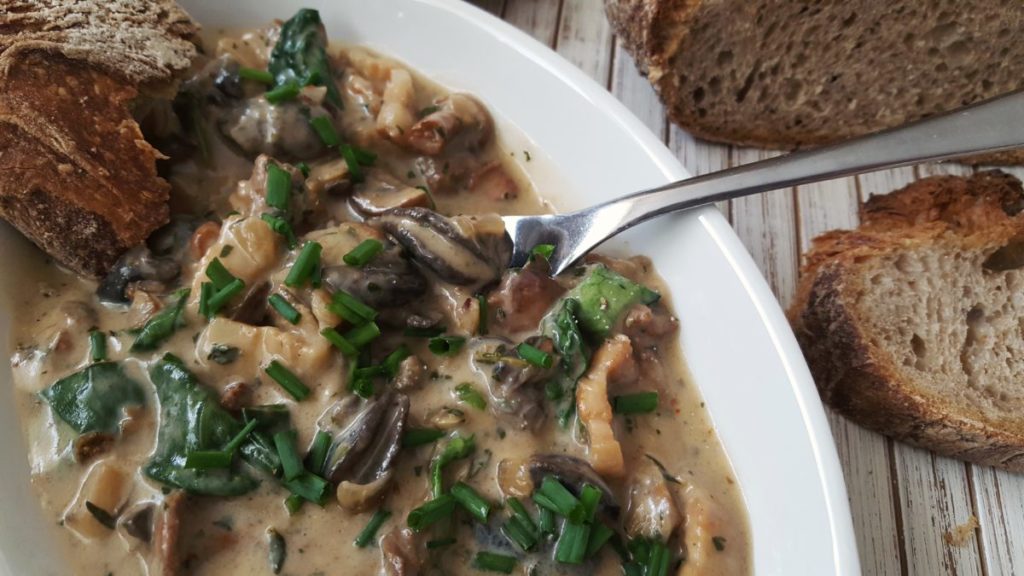
This cocotte is gluten free, so if you need it to stay that way, either serve as is without any topping, or make either crust version using gluten free crumbs.
Ingredients
250 gr cooked escargots without their shells, drained and rinsed if from a tin or jar
1/2 tbsp rapeseed oil or butter
120 gr bacon or pancetta, cut into lardons
150 gr mushrooms, cleaned and quartered or halved depending on size (use wild mushrooms if in season – I used chestnut mushrooms and chanterelles from the freezer)
1 tbsp dried porcini mushrooms, soaked in enough hot water to cover
1 banana shallot or small onion, finely chopped
1-2 cloves of garlic or 4 confit garlic, finely chopped or crushed
150 ml chicken stock
80 ml madeira, vermouth or dry white wine (vin jaune would be perfect)
a sprig or 2 of fresh thyme
some parsley or chives, finely chopped
1 bay leaf
a pinch of piment d’espelette or cayenne pepper
a few gratings of fresh nutmeg
2 handfuls of fresh baby spinach
2 tbsp creme fraiche
1-2 tsp corn flour
S&P
Crusty bread to serve
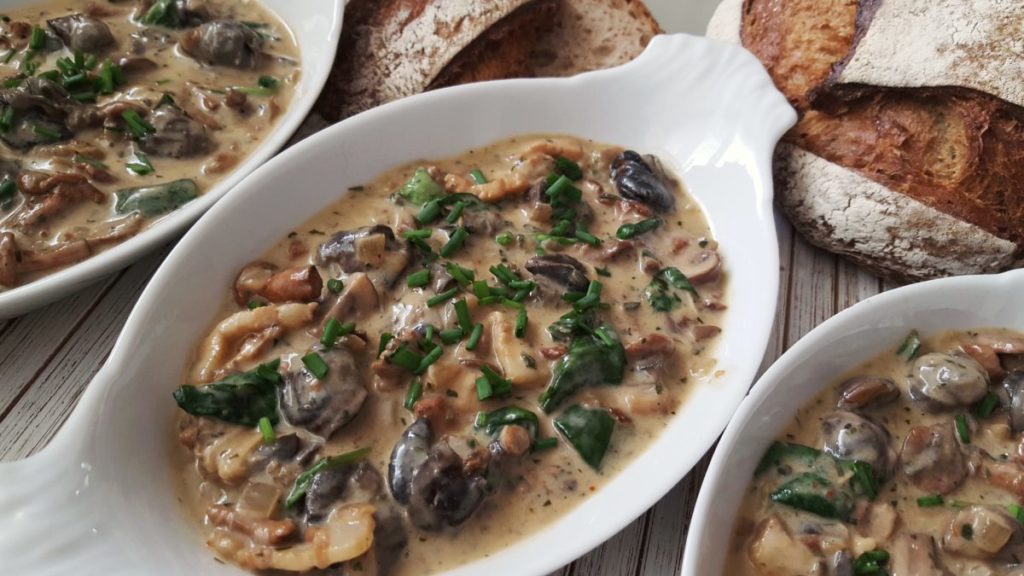
Method
Fry the bacon in a heavy-based casserole over medium-high heat until crisp and fat has released. Drain. Reserve the fat for another use if you like.
Put the casserole back on the heat with any bacon fat that remains in the pan after draining. Add the shallot and sauté over medium heat until translucent. Return the bacon to the pan and add the garlic. Sauté for a few minutes.
Add the mushrooms, season and cook until they are releasing their juices. Then deglaze the pan with the wine and cook until the juices have as good as evaporated.
Add the stock, bay leaf, herbs and spices (keep some herbs behind for the final garnish if serving without a topping). Season to taste.
Squeeze out the dried porcini mushrooms and cut into slithers. Add them to the pan together with the strained soaking liquid and the escargots. Bring to a simmer, then cover and turn the heat down to low. Cook for 15 mins or so. Add the spinach and allow to wilt. Lastly stir through the creme fraiche and check the seasoning.
Fish out the bay leaf and thyme, then either serve as is in individual dishes with some extra herbs scattered over, or add an optional topping as a final flourish.
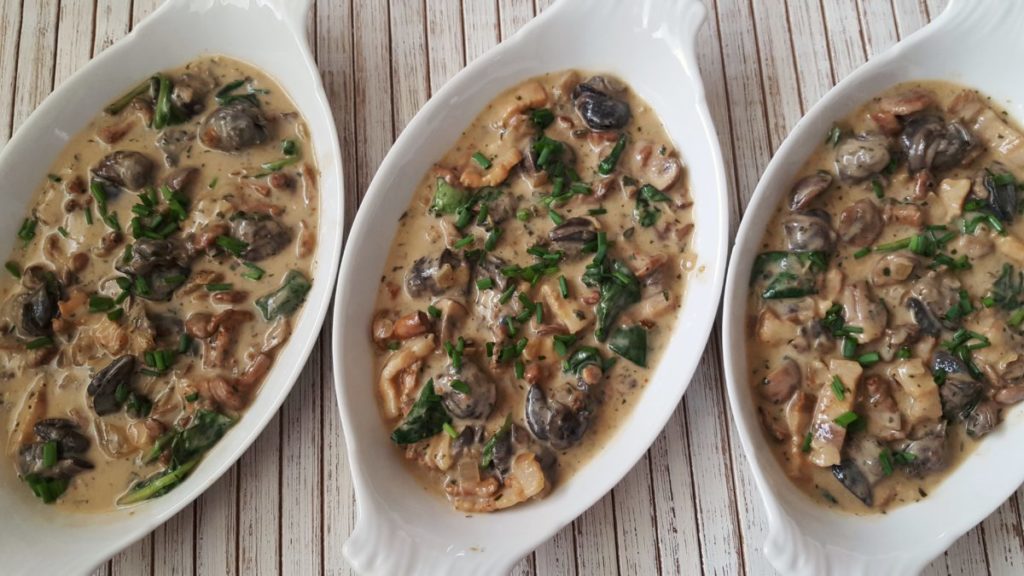
Optional toppings:
For a Pastry Hat
1 ready rolled sheet of puff pastry
1 egg
Sesame seeds or poppy seeds (optional)
Heat the oven to 200 C. Beat the egg with a fork in a little bowl and brush the edges of each oven dish with the egg wash. Top each dish with puff pastry, gently pressing it down on the edges of the dish. Brush with more egg wash. Cut a small slash into the top of each to let excess steam escape. Sprinkle with sesame or poppy seeds if using, then bake for 30 mins or until the pastry is golden and puffed up.
For a Parsley Crust
50 gr (GF) Panko Japanese breadcrumbs or (GF) equivalent (leftover bread and crusts dried out in a low oven and finely crushed works perfectly fine)
2 tbsp fresh parsley, finely chopped
30 gr butter at room temperature plus a little extra for dotting
1-2 tbsp grated cheese such as Comté, Parmesan or Provolone (optional)
Heat the oven to 185 C.
Pulse the topping ingredients in a mini food processor. You’re looking for a crumb texture, not a paste and divide over the oven dishes. Pat down a little bit, dot with a few little blobs of butter here and there and sprinkle over a little grated cheese (if using).
Bake for 20 mins or so, or until the crumb crust is golden.
For a Cheese, Mustard and Caper Crust

A portion of, or leftovers from, my herb crusted fish topping.
Heat the oven to 185 C. Either roll out the topping between 2 sheets of greaseproof paper as indicated in the original herb crusted fish recipe, or sprinkle over each dish in a rustic fashion. Bake for 20 mins or so, or until the crumb crust is golden.
